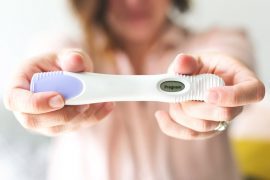Learning Natural Fertility (STM) assists those who want to:
- Feel more in control of their fertility and pregnancy planning
- Time a pregnancy to suit their lifestyle or specific needs
- Achieve a pregnancy after a time of unsuccessful “trying”
- Time intercourse to maximise changes of pregnancy where there is a low sperm count
- Time inseminations, incl. gay couples arranging sperm donation
- Maximise their chances of pregnancy in a short or specific timeframe because of
– endometriosis / polycystic ovary surgery
– advancing biological clock
– couples separated due to work commitments (eg, service personnel such as army and navy, athletes,
shift workers)
To begin, sometimes it is a case of looking at basic health and wellbeing issues such as:
- a good well-balanced diet
- maintaining a healthy body weight
- reducing caffeine intake
- quitting smoking
- stopping recreational drugs
- reducing alcohol (for men) and stopping alcohol for women
- examining excessively busy or stressful lifestyle/job
- changing lubricants to one with the correct pH
- ensuring the testes is cool enough to produce quality sperm
- examining exposure to toxins (some industries are over-represented in those experiencing fertility problems)
- adjusting exercise patterns/amounts (excessive exercise may prevent ovulation)
- examining prescribed medication and drugs and also off-the-shelf preparations regarding effects on fertility
A pre-conception check and care plan is becoming more popular in preparing for a pregnancy, to ensure couples are enhancing their chances of conception but also giving every chance and potential to their developing baby. It is worth noting that it takes up to three months for the sperm to manufacture and mature and possibly up to three menstrual cycles for any changes to have an appreciable effect.
Sometimes patience is what is required. There is a trend for women to leave it later to begin their families and there are well documented studies on the decline of fertility with age. The indications are that it takes twice as long for a 35 year old to conceive as it does for a 25 year old. Statistically it has been calculated that the chances of conceiving each month of a 25 year old is 25%. For a 37 year old woman this is reduced to 11% and then drops even more dramatically to 6% at age 40 yrs. If a woman of 35 decides to start a family and then experiences problems, the odds of achieving pregnancy shorten dramatically the longer it takes. A catch 22 situation: pregnancy needs to be achieved without delay but the chances of achieving it are getting less and less as each month goes by.
Rather than stressing out over potential issues, if a woman is aware of her fertility the couple are much more likely to be able to maximise their chances of conception in terms of correct timing of intercourse for her unique cycle. STM will also alert them of any problem much sooner.
Some of the points covered during learning Natural Fertility STM are:
Was hormonal contraception used? If yes, how long ago was it stopped? Return of cycles can be delayed; six months is quite common but for some it can be up to two years after hormonal contraception is stopped before cycles return. However, once cycles return it should only take about 2 to 3 cycles for fertility to be established again
Increased cervical mucus production indicates the beginning, and decreased mucus production indicates the end, of a potentially fertile time. Mucus is necessary to provide optimal living conditions for sperm and to aid their journey to the egg. Is there a noticeable increase in the amount of cervical mucus at any time during the cycle – identifiable through a damp/wet sensation and usually mucus apparent on toilet paper?
Do they know how to identify the fertile time of the menstrual cycle? Intercourse needs to take place during the fertile time of the female cycle to achieve pregnancy (from the onset of fertile mucus).
Not every woman ovulates on day 14 of her cycle so timing is important. Charting the basal body temperature and noting mucus symptoms will help the timing of tests. Every woman is different and cycle length can vary significantly – women with unusually short or long cycles may need special help to recognise the fertile time.
Although the sperm can survive in optimal conditions for up to seven days, the egg only lasts an average of 18 hours and a maximum of 24 hours. Is the woman actually ovulating?
Women can have periods and produce mucus without actually ovulating. Charting will help establish whether she is actually ovulating and also help time the progesterone test to confirm ovulation has occurred.
Is the luteal phase sufficient to establish a pregnancy? A luteal phase of seven days (preferably ten days) is necessary to establish a pregnancy – a shorter duration could mean that the period is actually a very early miscarriage
Breastfeeding can have a contraceptive effect. Usually cycles return fairly quickly once breastfeeding has stopped. Charting can provide indicators on how close the return to fertility will be. For women who do not want to stop breastfeeding but want to get pregnant again we can see just how much breastfeeding is critical for them – they may be able to reduce the number of feeds rather than stop all together.
Learning Natural Family Planning (STM) is an excellent tool to assist couples in assessing their gynaecological and fertility health. Knowing how they can maximise their chances of achieving pregnancy puts them back in control and for many couples that decreases their stress levels. The quest for a baby doesn’t have to be so stressful that all the fun goes out of lovemaking!
Whether it be for Conception or Contraception, it is recommended to learn STM with the assistance of a qualified educator (in fact, the only provider recommended to provide education for LAM: Contraception whilst Breastfeeding, is an educator accredited to Natural Fertility New Zealand) which generally takes three appointments over 2-3 months, and many educators provide ongoing advice and support for a year and beyond. (Some areas receive DHB funding which is reflective in its cost).
Robyn Fausett is an Accredited Educator for Nest Consulting ‘From Family Planning to Family Living’ www.nestconsulting.co.nz
This article originally appeared in Issue #4 of The Natural Parent Magazine, 2011.










